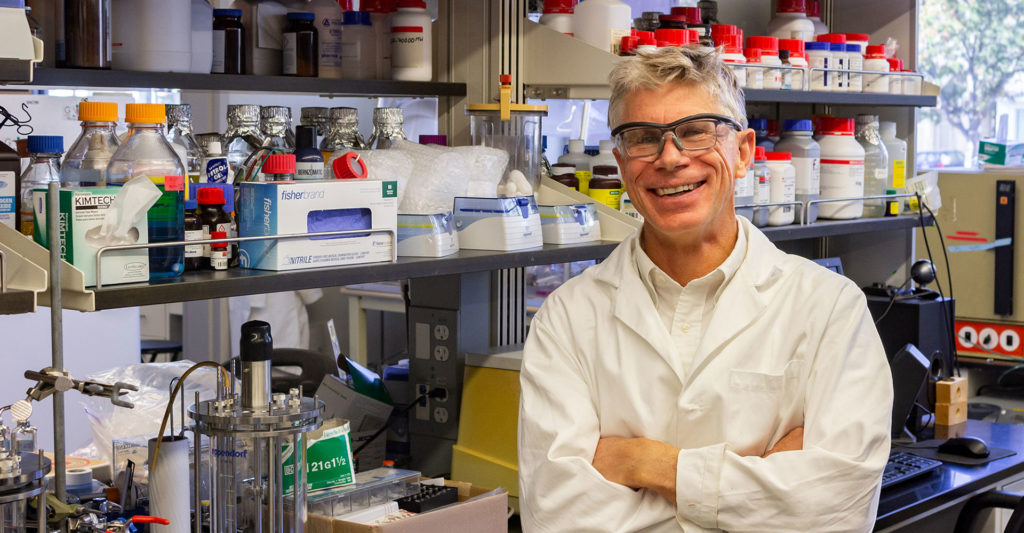
Who knew algae could be so fascinating? An algae club has grown out of the Walter Scott, Jr. College of Engineering, and it’s so popular that it attracts new students from across campus all the time.
So what do they meet about? They look more closely at this common green organism to learn about the different ways it can transform our lives as a source of food, fuels and other products. Watch a brief video about the club.
During the Spring 2019 semester, Ken Reardon, professor and associate department head of Chemical and Biological Engineering, emailed students with his plan to start the algae club. Through the hard work of the club officers, the Algae Club was launched.
Meetings have had 30-40 students attending, eager to learn and understand this multi-use organism. Reardon attends because he, too, is fascinated with algae.
Reaching out to K-12
With seminars, guest speakers and lab time, algae club members continue to get an in-depth and deeper understanding of their favorite organism. They hope to recruit members and show them just how cool and complex algae really is. The students also take the message to K-12 schools and the community through outreach programs and collaborate with the Algae Academy.
The club even met virtually this immediate past spring after CSU transitioned the semester to remote learning due to the novel coronavirus. Reardon, Assistant Professor Christie Peebles and 10 students talked with Jake Nalley, director of Agronomy at Qualitas Health, which sells algae oils under the Iwi brand. Students also got a virtual tour of the company’s algae facilities.
“I’ve been doing research with algae for more than 10 years and always found that students and everyone else seemed to find my algae projects more interesting than any of my other research topics,” Reardon said.
His algae research over the years has received about $5 million in funding from NSF and the U.S. Department of Energy. Seven other faculty members in the engineering college have been involved with these and other algae-related projects.
Students said they’ve gotten involved in part because Reardon brings the attention of the club to students during class.

Multiple uses explored
“Dr. Reardon sent out a massive email one day and I was like ‘Algae? That sounds pretty interesting. I like algae,” said Drew Breuninger, a Biomedical and Chemical and Biological Engineering student.
Students in the club come from colleges across campus. They devote hours out of their week to algae: understanding it, observing it, creating it and figuring out ways in which it can be the go-to sustainable option for things like fuel.
The green goop found around ponds is a lot more complex than what it may seem.
Darcy Moore, president of the Algae Club and a Biological Science major, who founded the club with Reardon, has worked in labs that experiment on algae to learn how to make it into food for our vehicles: fuel.
“I have worked with a biofuel algae species that we were looking into maximizing its photosynthetic capacity so we can look into making it more efficient at converting sunlight into resources like biofuels,” Moore said.
Kennalyn Peterson, an Ecosystem Science and Sustainability student, has also worked in the lab to understand the many complexities of algae.
“Algae is important because it can do just about anything,” Peterson said. “It’s a really unique organism, it has a lot of parts to it that we can rip out and turn into something great. One of the popular ones right now is biodiesel.”
The lipid, or oily part of algae, can be extracted and used to create biodiesel which can eventually be converted into a replacement for petroleum-based fuels. This sustainable new fuel option is one reason why the algae club is so important to these students, who dream to make the oil and gas industry more green and renewable.
Algae may be the future fuel, but it can do a lot more than that.
“We would not be here without algae. Not only would we not have air to breathe, but this whole biosphere is based on these primary producers that we hardly ever see,” Moore said.